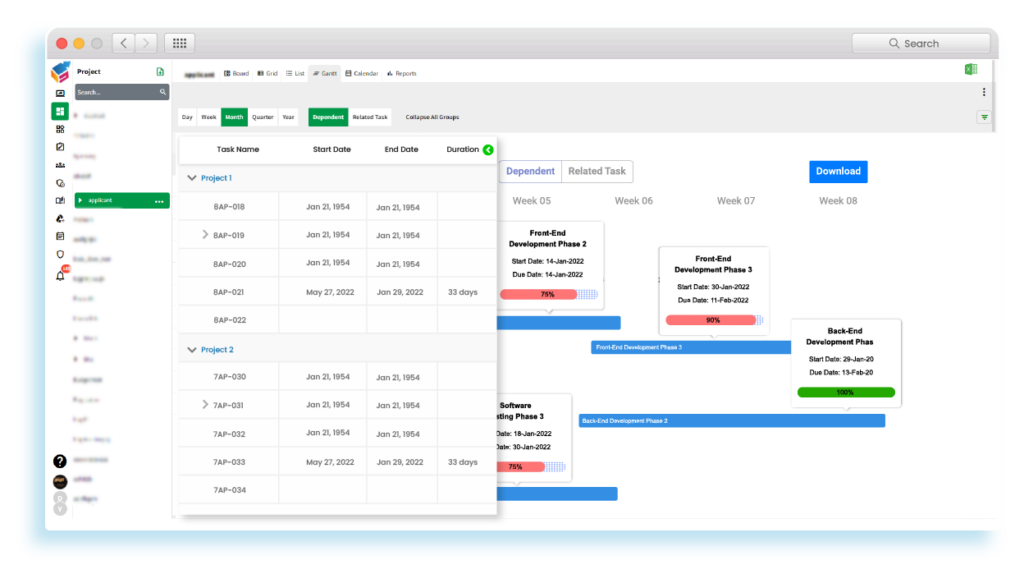Table of Contents
Are you struggling with project overload and feeling overwhelmed with the sheer number of initiatives on your plate?
Do you find it challenging to determine which projects to prioritize and which ones to defer or eliminate?
If so, you’re not alone. Many organizations struggle with prioritizing their projects and strategies effectively.
The good news is that help is at hand!
We’ve developed a comprehensive guide to project prioritization that will equip you with the project management software , project tracking software, and techniques you need to prioritize your projects and strategies effectively.

Our guide covers all aspects of project prioritization, explaining how project tracking tools can benefit your organization. This includes understanding your organization’s goals and objectives, as well as assessing the impact of individual projects on those goals.
What Is Project Prioritization?
Project prioritization is the process of determining which projects or initiatives to focus on first based on their level of importance, impact, and feasibility. It’s a critical skill and action plan that all successful organizations must master to achieve their goals and stay ahead of the competition.
At its core, project prioritization is about making strategic decisions about where to invest your time, money, and resources. It involves assessing the potential benefits and risks of each project, as well as considering factors such as available resources, timelines, and stakeholder needs.

By prioritizing your projects effectively, you can ensure that you’re focusing your efforts on the initiatives that will have the greatest impact on your organization’s success. You can also avoid wasting time and resources on projects that are unlikely to deliver significant benefits or that don’t align with your overall time management strategies.
In short, project prioritization is a critical skill that can make the difference between success and failure for your organization. By mastering this skill, you’ll be able to make strategic decisions about where to invest your resources, achieve your goals more efficiently, and stay ahead of the competition.
So why not start prioritizing your projects with the help of project management tool today and see the difference it can make for your organization?
Methods of Project Prioritization
There are several project prioritization methods, including the prioritization matrix, that organizations can use to determine which projects to focus on first. Here are some of the most common methods.
- Cost-Benefit Analysis: This method involves evaluating each project based on its potential costs and benefits. Projects with a high potential return on investment (ROI) are given higher priority.
- Strategic Alignment: This method involves assessing each project’s alignment with the organization’s overall strategy and goals. Projects that are closely aligned with the organization’s priorities are given higher priority.
- Urgency-Importance Matrix: This method involves categorizing each project schedule based on its level of urgency and importance. Projects that are both urgent and important are given the highest priority.
- Weighted Scoring: This method involves assigning scores to each project based on a set of predetermined criteria, such as potential ROI, strategic alignment, and resource requirements. Projects with the highest scores are given higher priority.
- MoSCoW Prioritization: This method involves categorizing each project into one of four categories: Must Have, Should Have, Could Have, or Won’t Have. Projects that are classified as Must Have – are given the highest priority.
- Prioritization Matrix: The prioritization matrix is a valuable tool in project management, providing a systematic approach to evaluate and prioritize projects based on criteria such as importance, urgency, and feasibility.
Project Prioritization Process: How to Prioritize Projects and What are the 4 levels of prioritizing tasks?
Here are four steps for prioritizing projects:
Identify the Goals and Objectives
Before prioritizing projects, you need to identify the goals and objectives of your organization. This includes understanding what the organization is trying to achieve in the short term and long term. Once you have a clear understanding of the goals and objectives, you can align projects with these goals and prioritize them based on their importance.
Evaluate the Projects
Once you have a list of projects that align with your goals and objectives, you need to evaluate each project based on its impact on the organization. Consider the potential return on investment, the level of effort required to complete the project, and the resources needed to implement it. You should also consider any potential risks or challenges associated with the project.
Assign Priority
After evaluating each project, assign a priority to each based on their relative importance to the organization. You can use a ranking system, such as high, medium, or low priority or assign a numerical value to each project based on its importance.
Review and Adjust
Finally, it’s essential to regularly review and adjust the project priorities as needed. Priorities may shift based on changes in the organization’s goals, resource availability, or external factors. By regularly reviewing and adjusting priorities, you can ensure that resources are allocated to the most important projects and that the organization continues to move towards its goals.
Yoroproject Helps with Project Prioritization
As you can see, project prioritization is a critical component of successful project management. Without a clear understanding of which projects are most important to the organization, resources can be allocated inefficiently, and progress towards goals can stall.
That’s where Yoroproject comes in!
Yoroproject is a powerful project management tool that can help you prioritize your projects effectively. With features like project timeline, project planning, custom reports, SCRUM board, sprint view, task board, and resource allocation tools, you can easily evaluate and prioritize your projects based on their importance to your organization.

Additionally, Yoroproject‘s real-time dashboards and reporting tools allow you to track progress and adjust priorities as needed, ensuring that your organization stays on track towards its goals.
By using Yoroproject to prioritize your projects, you can save time, improve efficiency, and ultimately achieve better results.
Don’t let project prioritization hold you back – try Yoroproject today and see how our project management tool can help you prioritize your projects like a pro.




